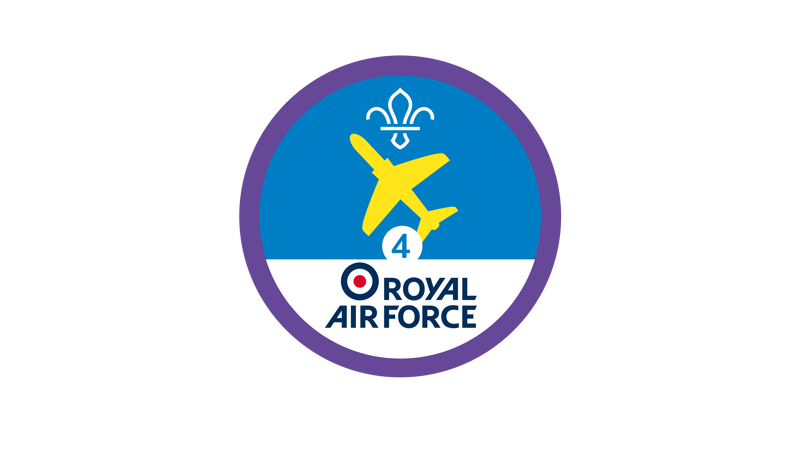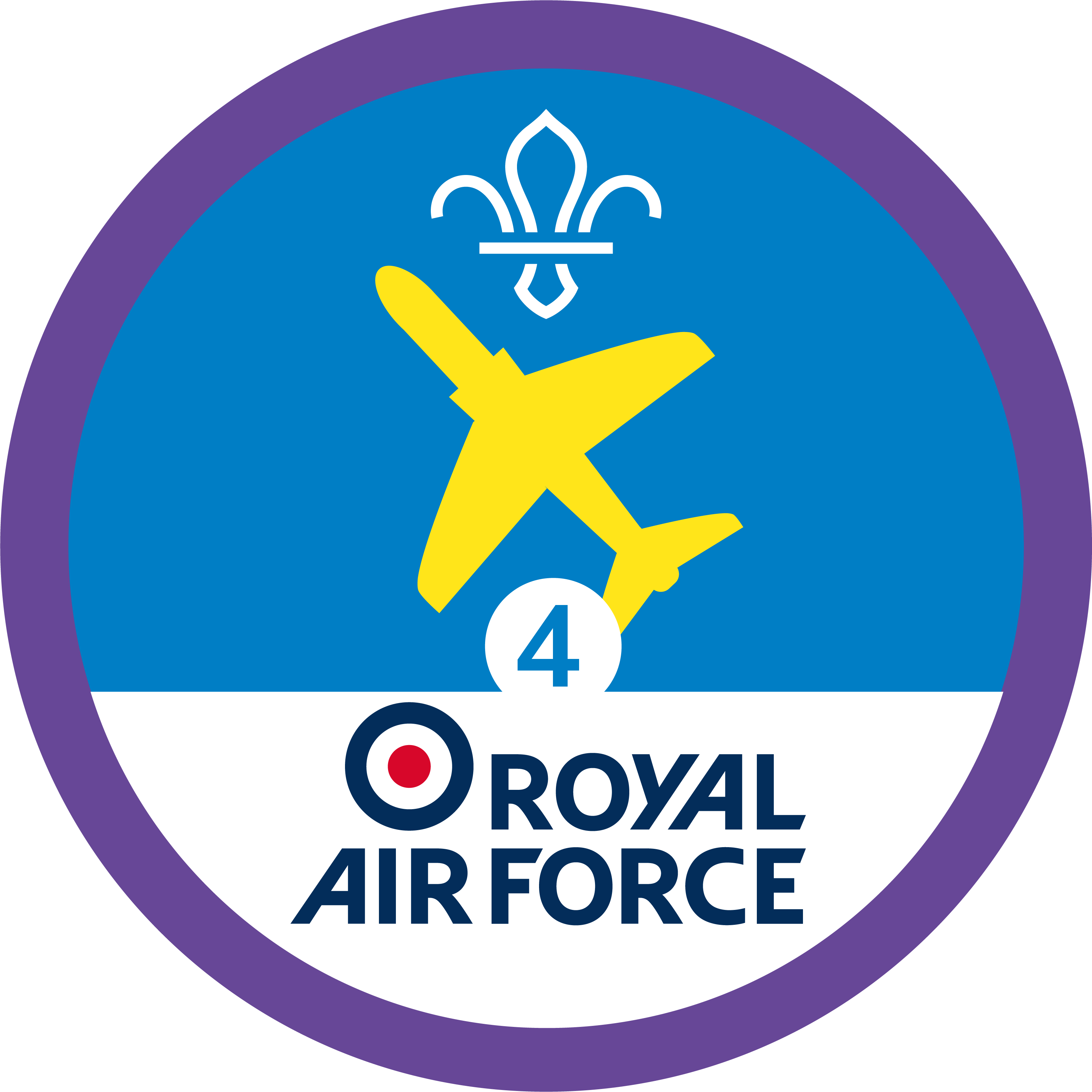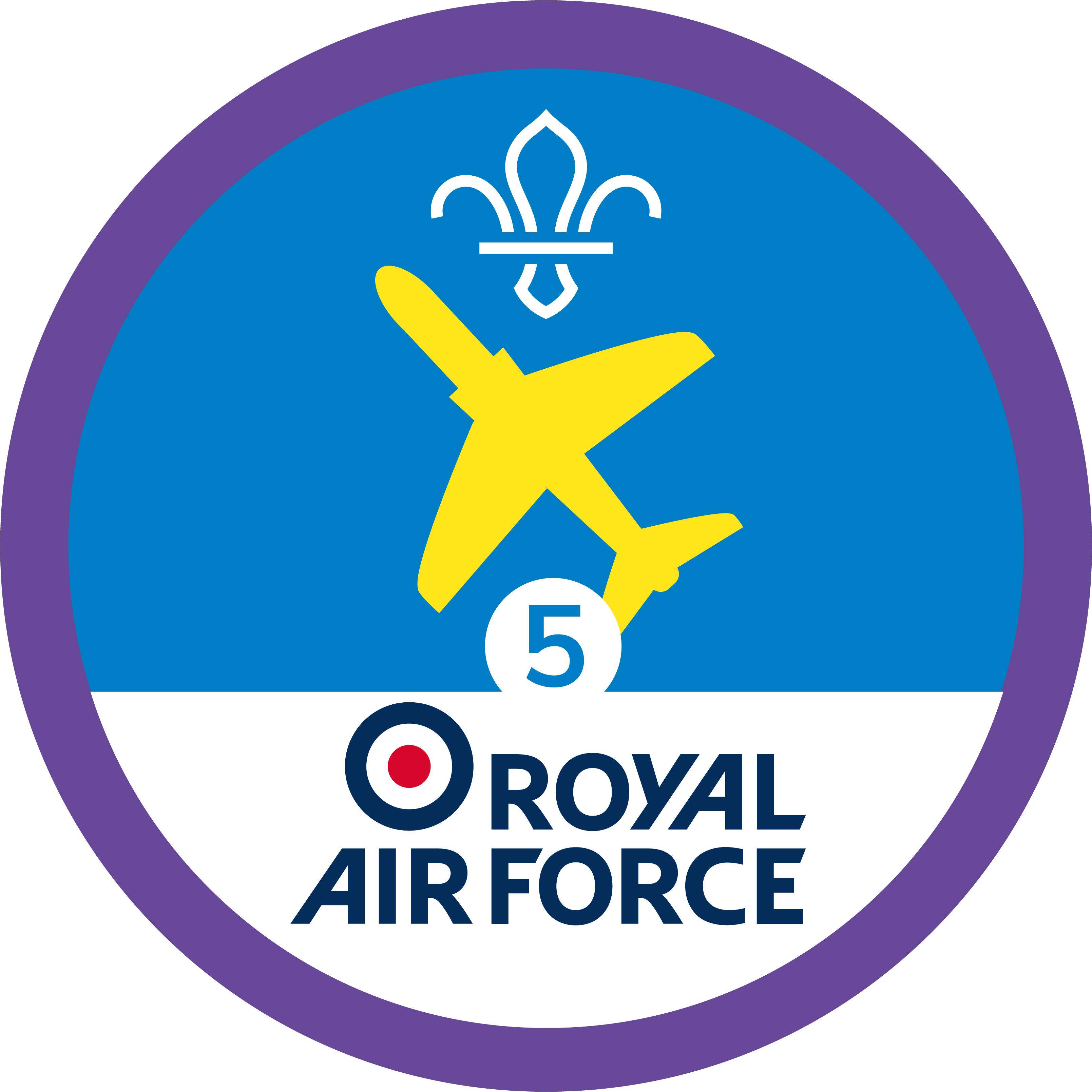
Drag it, lift it, thrust it, weigh it
You’ll need
- Pens or pencils
- Scissors
- Glue sticks
- Craft materials (for example, tissue paper, pipe cleaners, stickers)
- Specific equipment for each experiment (see instructions)
Before you begin
- This activity is in a sequence, so you should do each part in the order they’re in below. You could do this over one long session or split them over two or more sessions. This should also give you time to get together all the equipment needed for each part of the activity sequence.
Bear in mind that groups may need a quick refresher at the start of each session, if doing this activity over several weeks.
- Some points to remind everyone of:
- Drag is resistance from air. Because a plane is cutting through the air very quickly, every part of the plane feels air resistance, even the engines.
- The engines provide thrust to move the plane forwards but not necessarily upwards.
- Lift is the force that keeps a plane in the air, despite the weight which is pulling it down.
It's a drag
You will need
- A4 paper
- Tables and chairs
- Sticky tape
- Stopwatch or sticky tape
- Modelling clay (optional)
- Weighing scales (optional)
- Copies of the ‘Shape templates’ sheets
- Everyone should split into small groups. Each group should have one helper.
- Explain to everyone the principle of ‘drag’: The amount of drag an object causes by moving through the air depends on its size and shape. Small, thin shapes move through the air quite easily, while large, wide shapes are slowed down and dragged back by the air.
- Each small group should pass around their two sheets of paper. They should decide amongst themselves which weighs the most, or if they’re the same. Then, the helper in each group should screw up one piece of paper, and then pass them round again. Discuss their weight again. See who thinks which piece of paper will fall the fastest if dropped. Test it out! See if anyone can explain why the ball of paper fell faster.
- Explain that the paper ball weighed exactly the same but fell faster because there was less ‘air resistance’ (drag) slowing it down. The paper sheet is big and wide, so more air was able to slow its fall.
- Give out the ‘Shape templates’, tape and scissors. Have groups put together the shapes using the instructions. They should end up with four different shapes. Add or equalise weight by adding some modelling clay attachments, then weighing on scales.
- Groups should take turns to carefully drop their objects from a height to see which falls fastest. With close supervision, they could do this standing on a chair. If there’s time, do this several times over.
- Groups should show their helper which objects fell the fastest and which fell the slowest. See if they can explain why.
Be air aware
You will need
- 300 ml jar
- Half-gallon jar
- Toothpick/small drinking straw
- Two balloons
- Two rubber bands
- Sticky tape
- Everyone should split off into small groups. Some bits of this part are tricky, so each group may need a helper.
- Explain to everyone how air pressure beneath the wings of a plane helps it lift off.
- Give out balloons, jars, rubber bands, scissors and toothpicks/straws. Cut the top (the end you knot) off of the balloon.
- Stretch out the balloon and fit it over the rim of your small jar, so that it’s airtight. Wind a band round the rim to keep the balloon in place. Point out that the air pressure inside the jar should now remain constant (the same) for the rest of the activity, unless there’s a leak.
- Tape the toothpick/straw to the top of the jar, with half its length on the balloon skin and half overhanging.
- Place the small jar inside the larger jar, taking care not to dislodge the toothpick/straw.
- Repeat steps 3 and 4 with the large jar, giving it an airtight seal.
- Point out that pushing and pulling the balloon on top of the large jar should change the air pressure inside, while the seal holds. Everyone should have a go at this, while thinking about the following questions:
-
- What happens in the large jar when you press the balloon skin down? The same amount of air has less space, so the pressure in the large jar increases.
- What happens to the toothpick when you push the top of the large jar? The end of the toothpick should move up as the other end moves down on the balloon skin.
- Why does the balloon skin on the small jar move down? The air pressure in the large jar has increased, while the air pressure in the small jar stayed the same. As the air pressure in the small jar is now lower than the large jar, the balloon skin is pushed down.
- What happens in the large jar when you pull the balloon skin up? The same amount of air has more space, so the pressure in the large jar decreases.
- What happens to the toothpick when you pull the top of the large jar? The outside of the toothpick should move down as the other end moves up on the balloon skin.
- Why does the balloon skin on the small jar move up? The air pressure in the large jar has decreased and the air pressure in the small jar stays the same. As the air pressure in the small jar is now higher than the large jar, the balloon skin is pushed up.
Give me a lift
You will need
- 2 l plastic bottle
- Paperclips
- Polystyrene block (small enough to fit inside the bottle)
- Electric fan or cold-blowing hairdryer
- Craft knife
- String
- 33 cm by 12 cm (or similar) block of wood
- Small crosshead screwdriver or knitting needle
- Elastic bands
- Copies of the ‘Teardrop wing template’ sheets
- Everyone should split off into small groups. Each group will probably need a helper.
- Carefully cut the top and bottom off of a 2 l bottle. You should now have a see-through cylinder of plastic.
- Give out the polystyrene blocks, craft knives and the ‘Teardrop wing template’.
- In each group, one person should stand the block up vertically, place their template on top of the polystyrene and use it to carve a ‘teardrop’ shape out of the block. If this is fiddly, helpers should supervise closely. You should end up with a piece of polystyrene shaped like an airplane wing, flat-bottomed, with a curved top that bulges at one end and slopes away on the other. Helpers should try to make sure this is done as smoothly as possible, to make sure each wing will lift off.
- Once everyone has their wing, very carefully use the screwdriver/knitting needle to pierce a hole in the side of it, running all from the base to the wingtip (right to left). Do this by gently rotating the screwdriver/knitting needle against the polystyrene, removing a small amount at a time, until a thin tunnel runs straight through the wing. It may be easier to do your hole on the thicker side of the wing, where the curved top is.
- Now, pierce opposite sides of the plastic cylinder.
- Place the wing inside the cylinder, then thread string through one side of the cylinder, through the hole in the wing and out through the cylinder again. Adjust the wing so that its flat side faces down.
- Knot or attach paperclips to the string to fix it at either side of the cylinder.
- Glue the cylinder on top of the block of wood, so that it sits securely.
- Place a fan or hold a cold-blowing hairdryer in front of the cylinder (facing the bulging end of the wing) and turn it on. The wing should lift off the surface.
- When everyone has got their wing flying, gather everyone together. Recap the relevant science from ‘Be air aware’, and have everyone discuss and answer the following questions:
-
- What might be keeping the wing floating and where is the ‘low’ air pressure and the ‘high’ air pressure on the wing? High air pressure will push on low air pressure; that’s why pushing that large jar’s balloon skin makes the smaller jar’s balloon skin go down. The large jar’s air pressure increases so that it’s higher than the smaller jar’s air pressure.
- Why does the top of the wing have lower air pressure? The wing cuts the airflow into two, above and below the wing. The air below the wing has a smooth journey past the flat edge, but the air above the wing has a longer journey, due to the curve of the top of the wing. A longer journey creates space behind the bulge and just like pulling the balloon on the jar, more space means lower air pressure. This allows the higher air pressure underneath the wing to push the wing up.
Paper planes
You will need
- A4 paper
- 40-50 mm safety-clip or bulldog clip
- Sticky tape
- Copies of the ‘Fold a paper plane’ sheets
- Everyone should split off into small groups. Groups should have a helper.
- Have each group create a paper plane from the designs on the ‘Fold a paper plane’ sheet, or they could create their own designs.
- Groups should mark their own plane with a pencil, line up somewhere where there’s space and test out their planes. Throw the planes gently the first time, retrieve them and then throw with more force.
- Ask everyone what moves their paper plane forward and then ask what moves a real plane forward. With the paper plane, thrust is provided by the throw; with a full-size metal plane, thrust is provided by the engine. Thrust is the force that pushes an object in a direction. When a paper plane leaves your hand, it’s as if the plane engine has been turned off, but it still has enough momentum to glide. The more thrust it starts with, the more momentum it carries and the further it’ll go.
- Everyone should add some weight to their plane and try throwing them again. A large paperclip weighs about the same as a paper plane and can be attached easily.
- Before throwing, everyone should make a prediction about how their plane will fly with more weight onboard. They might also change their throwing style.
- See who can correctly predict how their plane will perform. Planes might need more thrust and could struggle to carry the load.
- Everyone should remove the weight and fold up one of the flaps on the tail of their plane. This should cause it to change direction in flight towards the side with the folded flap. Test them out to see how the flightpath curves.
- Everyone should fold up the other flap on the tail of the plane. This should cause the plane to ‘stall’ in flight. Test them out to see if this happens.
- Gather everyone together to discuss the relationship between thrust, weight, lift and drag:
-
- Planes are very heavy, often weighing as much as 30 cars. How does all that weight stay in the air? To stay in the air, lift is needed, as we saw in ‘Give me a lift’.
- What happens if a plane has too much lift? The plane will rise upwards, because there’s more lift pushing it up than weight pulling it down.
- Planes land and stop regularly. If a plane has stopped, what does it need to start moving forward again? It needs thrust, which is provided by the engines. The thrust helps to create lift, which allows a plane to take off.
- If the engines were turned off, what would happen to the plane’s speed? The plane would slow.
- Why does the plane slow? Drag, or air resistance, slows a plane down. Thrust is needed all the time to overcome air resistance, if the plane is going to keep moving.
- When it’s windy outside, take the planes out and see how they fly in these conditions. Wind direction and strength are important for take-offs and landings.
- Once everyone has tested their planes, gather to discuss and answer the following:
-
- If a plane flies head-on into a strong wind, drag increases, so what’ll the plane need to increase to continue flying? The plane would need to increase the thrust, by turning up the engines.
- What problems might a plane face if it’s windy during take-off and landing? The plane might have to work harder if the wind is strong.
- What problems might be caused if the wind is blowing at an angle to the plane? It may be harder to steer the plane straight.
Reflection
In this sequence of activities, we saw drag, lift, weight and thrust in action. Did seeing these properties in action make them easier to understand than the written definitions? How did working in groups also make it easier to understand these processes and the properties themselves? Group-work made it easier to measure and record results, as there was always someone to check that your predictions were in line with the science.
It was important to follow the instructions in the order they were given, change one thing at a time and make predictions on what would happen before testing. Why is this? Answer: to make sure the results are consistent, to understand how one change affects the experiment as a whole and to check that everyone has an idea of how each property affects the experiment.
Safety
All activities must be safely managed. You must complete a thorough risk assessment and take appropriate steps to reduce risk. Use the safety checklist to help you plan and risk assess your activity. Always get approval for the activity, and have suitable supervision and an InTouch process.
- Rubbish and recycling
All items should be clean and suitable for this activity.
- Science
Supervise young people, and only do science activities that are advised and age appropriate for your section. Test activities first, to make sure you’re confident you can lead them safely. Use protective clothing where necessary.
- Scissors
Supervise young people appropriately when they’re using scissors. Store all sharp objects securely, out of the reach of young people.
- Glue and solvents
Always supervise young people appropriately when they’re using glue and solvent products. Make sure there’s plenty of ventilation. Be aware of any medical conditions that could be affected by glue or solvent use and make adjustments as needed.
- If you’ve already covered activities on control surfaces and directional flaps, these could be factored into the discussion at the end of the activity (when testing paper planes in the wind).
- Helpers should challenge individuals in groups by rotating responsibility for tasks, where appropriate.
- Make sure everyone has everything they need to complete the tasks in this activity. Bear this in mind when splitting off into groups.
- Anyone not able to throw their plane should contribute to other parts of the activity, such as design and construction, as they prefer.
- Try to throw planes in a calm manner, in a clear space apart from other groups.
All Scout activities should be inclusive and accessible.
Come up with tables for everyone to record their data on for all parts of this activity. For instance, you could measure the number of times you dropped your shapes and how quickly they fell in ‘It’s a drag’. Everyone can then compare their results after the activity to see if there were any that stood out, and if you could say anything with more certainty using the combined data.
Young people should be given the chance to point out the properties being explored in this activity when they’re apparent, to confirm their understanding. They could also help to find the materials needed for this activity and help set up.

